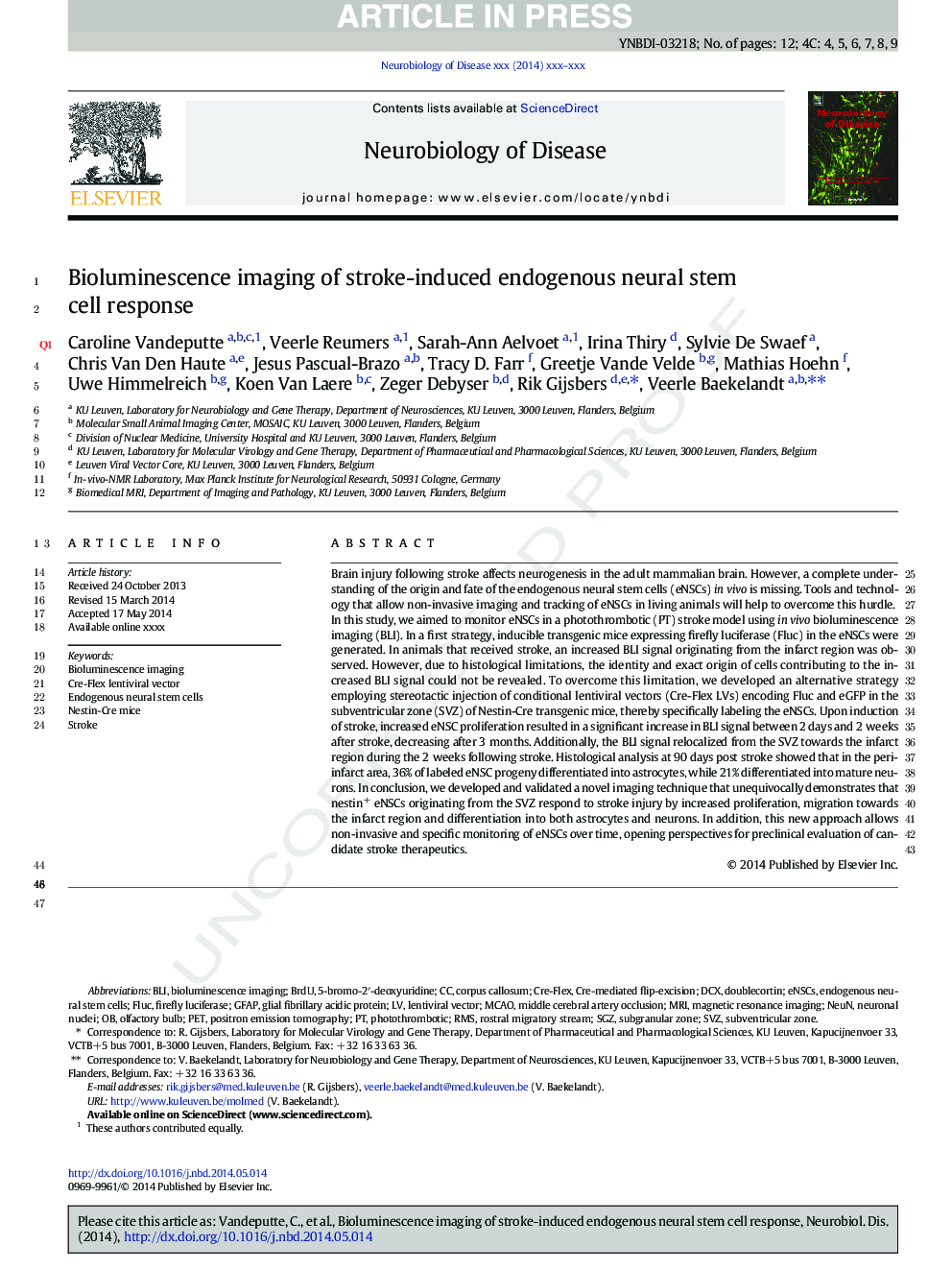| Article ID | Journal | Published Year | Pages | File Type |
|---|---|---|---|---|
| 6021925 | Neurobiology of Disease | 2014 | 12 Pages |
Abstract
In this study, we aimed to monitor eNSCs in a photothrombotic (PT) stroke model using in vivo bioluminescence imaging (BLI). In a first strategy, inducible transgenic mice expressing firefly luciferase (Fluc) in the eNSCs were generated. In animals that received stroke, an increased BLI signal originating from the infarct region was observed. However, due to histological limitations, the identity and exact origin of cells contributing to the increased BLI signal could not be revealed. To overcome this limitation, we developed an alternative strategy employing stereotactic injection of conditional lentiviral vectors (Cre-Flex LVs) encoding Fluc and eGFP in the subventricular zone (SVZ) of Nestin-Cre transgenic mice, thereby specifically labeling the eNSCs. Upon induction of stroke, increased eNSC proliferation resulted in a significant increase in BLI signal between 2Â days and 2Â weeks after stroke, decreasing after 3Â months. Additionally, the BLI signal relocalized from the SVZ towards the infarct region during the 2Â weeks following stroke. Histological analysis at 90Â days post stroke showed that in the peri-infarct area, 36% of labeled eNSC progeny differentiated into astrocytes, while 21% differentiated into mature neurons. In conclusion, we developed and validated a novel imaging technique that unequivocally demonstrates that nestin+ eNSCs originating from the SVZ respond to stroke injury by increased proliferation, migration towards the infarct region and differentiation into both astrocytes and neurons. In addition, this new approach allows non-invasive and specific monitoring of eNSCs over time, opening perspectives for preclinical evaluation of candidate stroke therapeutics.
Keywords
Corpus callosumGFAPSVZSGZRMSMCAONeuNDcx5-bromo-2′-deoxyuridineFLucMRImiddle cerebral artery occlusionLentiviral vectorBrdUbioluminescence imagingMagnetic resonance imagingPositron emission tomographyrostral migratory streamBLIdoublecortinStrokeFirefly luciferasesubgranular zonesubventricular zoneneuronal nucleiPETGlial fibrillary acidic proteinolfactory bulb
Related Topics
Life Sciences
Neuroscience
Neurology
Authors
Caroline Vandeputte, Veerle Reumers, Sarah-Ann Aelvoet, Irina Thiry, Sylvie De Swaef, Chris Van den Haute, Jesus Pascual-Brazo, Tracy D. Farr, Greetje Vande Velde, Mathias Hoehn, Uwe Himmelreich, Koen Van Laere, Zeger Debyser, Rik Gijsbers,
